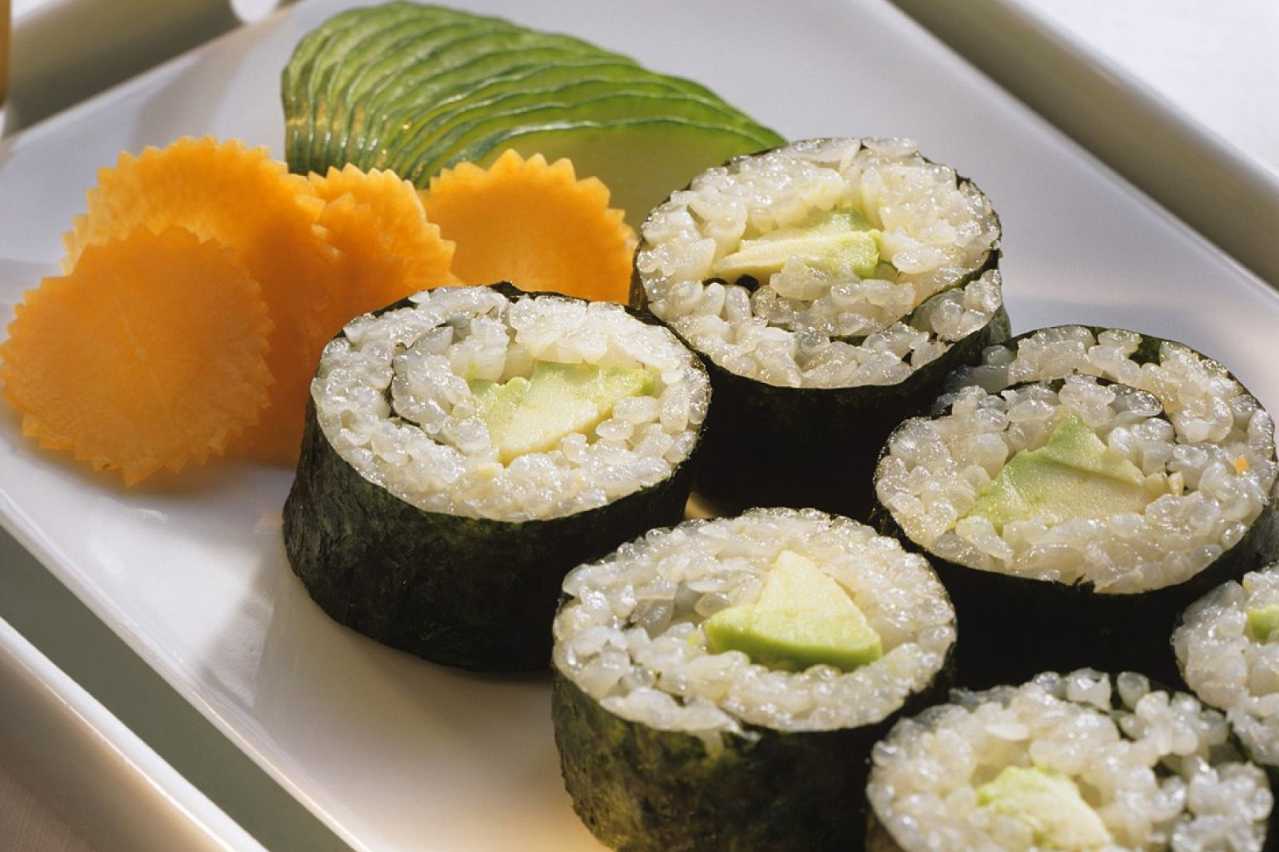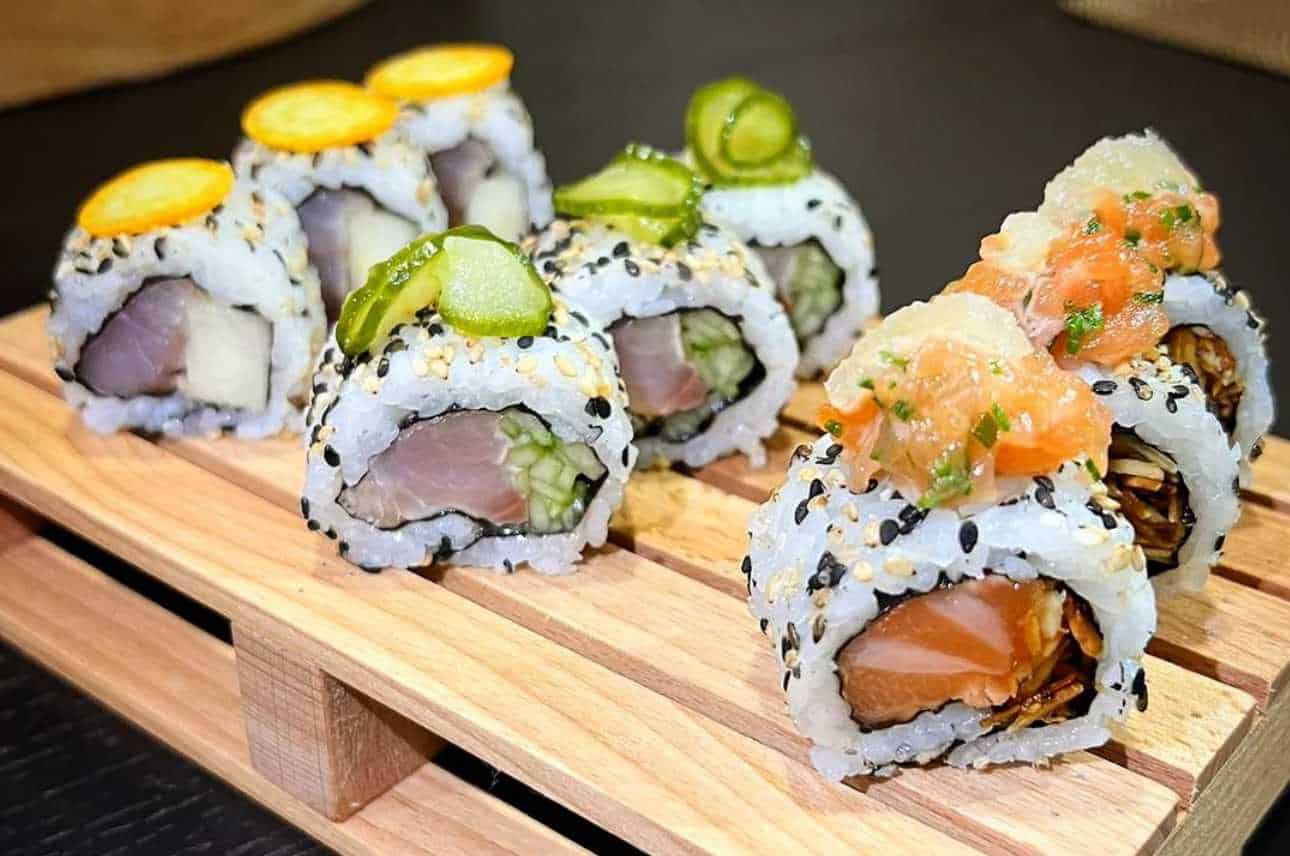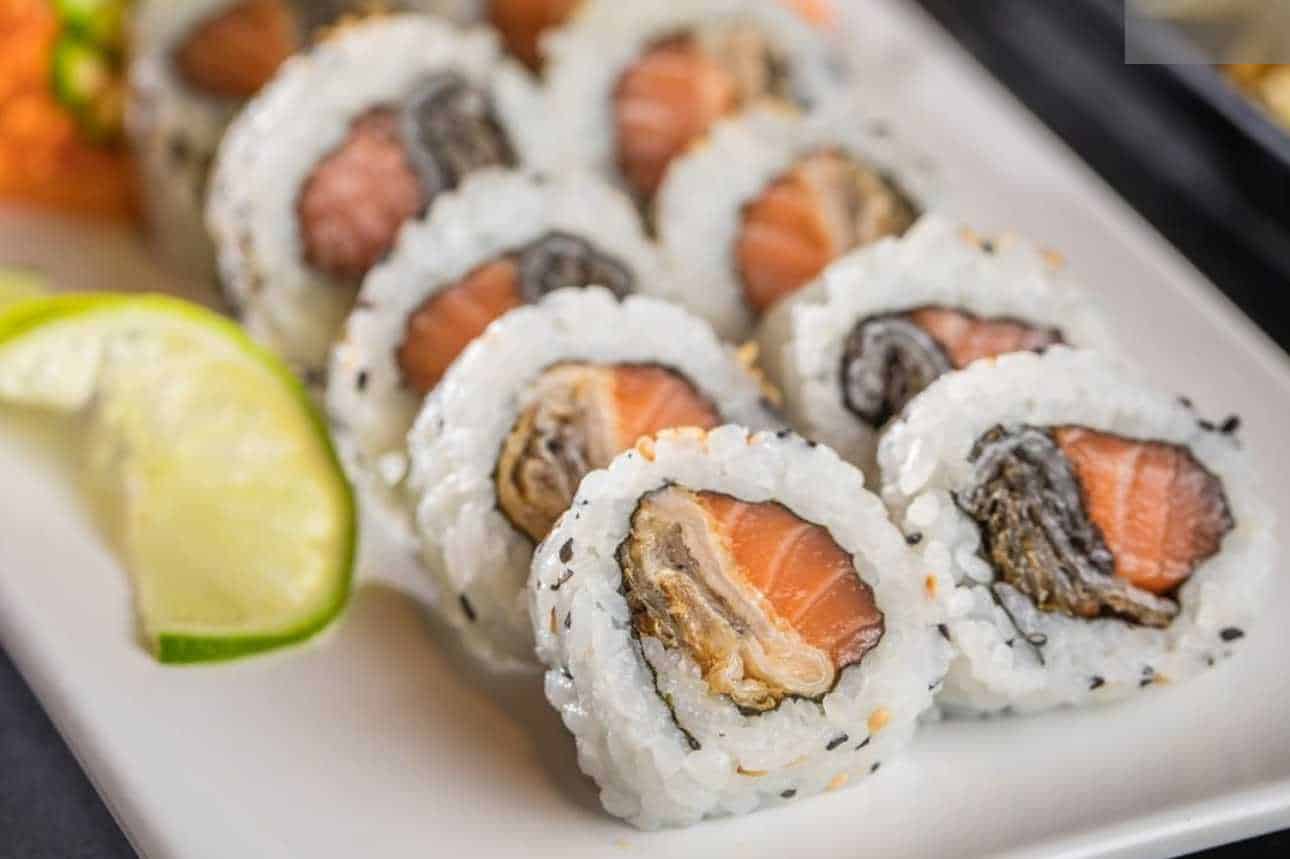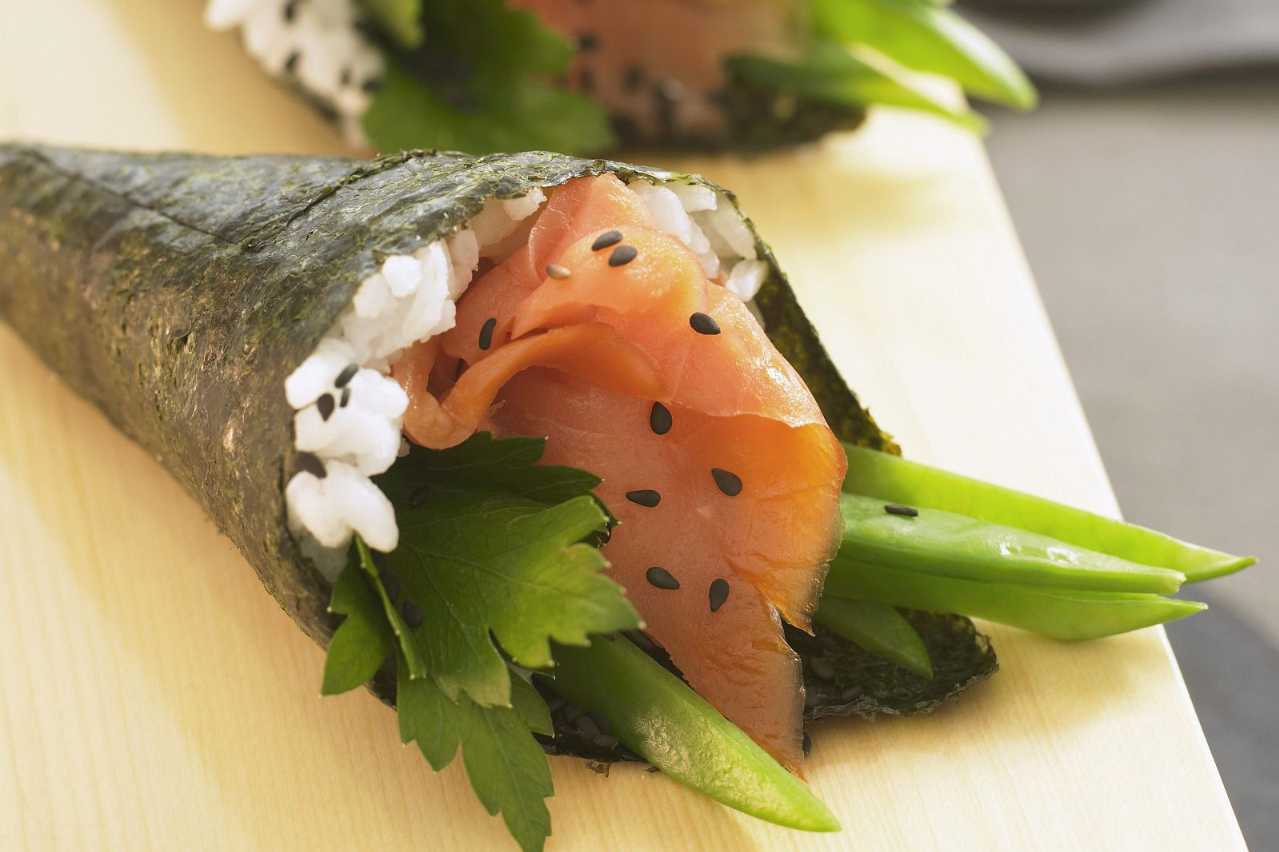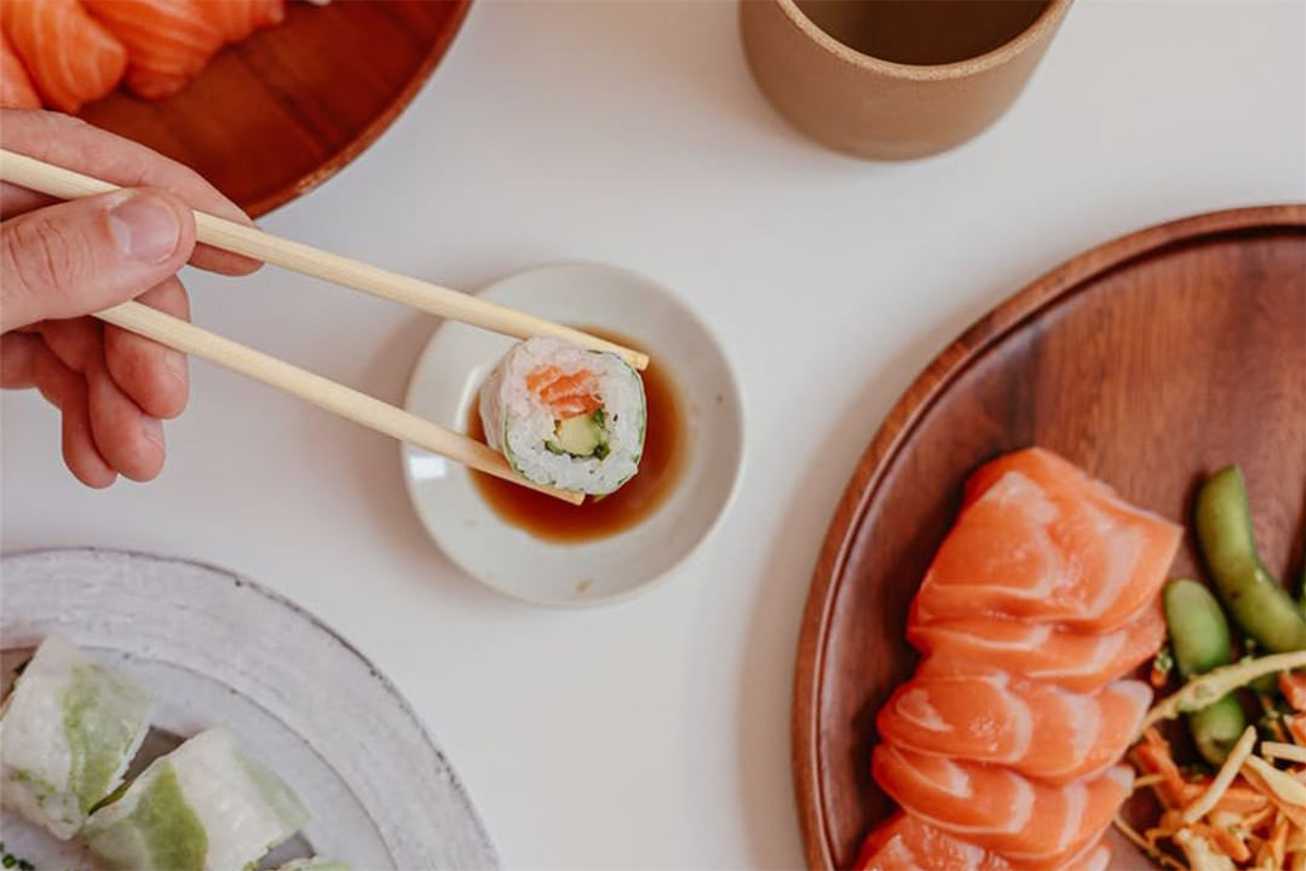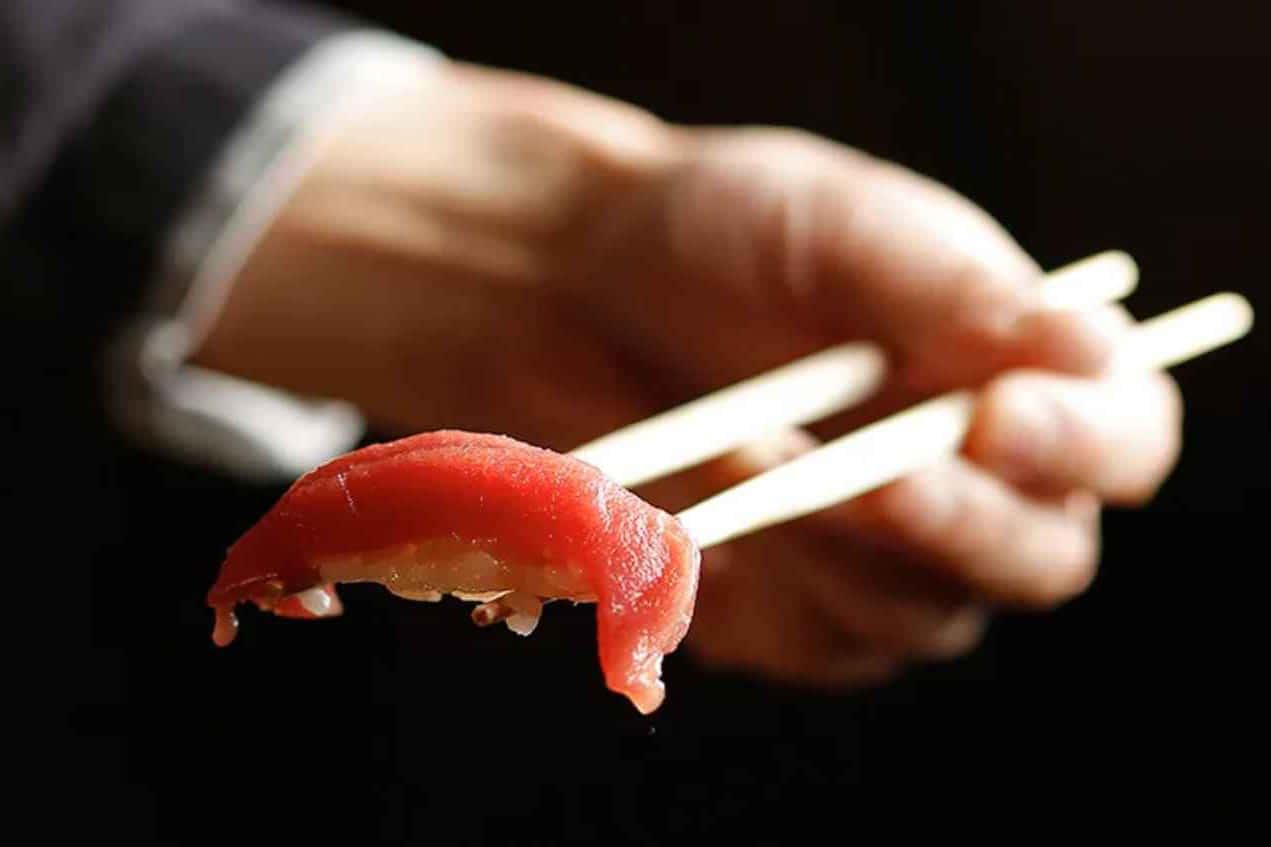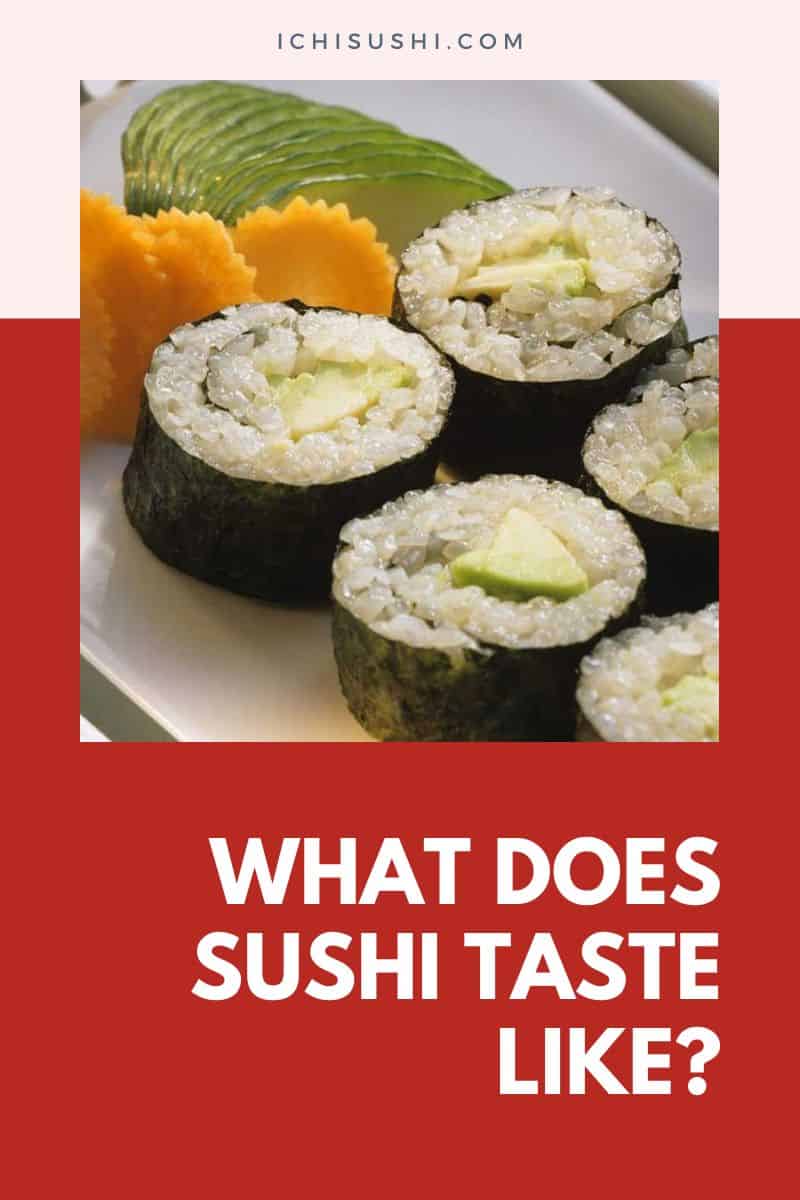Wherever you may be on the culinary map, it’s most likely expected that you know about sushi. It’s a popular Japanese dish that features a variety of ingredients.
Yet, despite its popularity, there are still people oblivious to its taste because they haven’t tried it yet. So, what does sushi taste like?
Sushi Overview
Sushi is a popular Japanese dish served all over the world. One thing about sushi is that it should have sushi rice. Anything other than that is not considered sushi anymore.
So it’s safe to say that rice is the single ingredient that holds the sushi umbrella together. There are many types of sushi out there, and there are still more variations coming out of genius culinary minds.
The most common ones found in restaurants include different types of nigiri and Maki. Nigiri is a type of sushi mainly composed of rice formed like a lump and meat carefully and beautifully placed on top of it.
It’s like a mini rice topping meant to be eaten in one bite. On the other hand, Maki is a type of sushi that involves the process of rolling.
This type of sushi is made by laying a decent amount of sushi rice on a rolling mat. The next step would be placing an ample amount of ingredients you want as fillings.
Because of the variety of sushi ingredients, it’s exciting and fun, and it has a lot to offer your palate. There are just so many possibilities with sushi!
Thus, chefs from all over the world continue to develop different ways to level up their sushi recipes.
On the other hand, some restaurants like to keep everything traditional, so you can still try the older versions and the more conventional versions of different sushi types.
The Many Flavors In A Sushi
Sushi is not just a single ingredient offering a single flavor. As mentioned earlier, it combines many elements, so there is no single overpowering flavor.
Sushi is a very mild-tasting dish. There is no overwhelming flavor involved in sushi. This dish is just relaxing and very neutral in terms of taste.
Sushi rice
Sushi rice is probably the main character among the sushi ingredients. However, sushi is not sushi if there is no sushi rice. Different chefs from all over the world have their way of preparing sushi rice.
The rice involved in sushi is not cooked rice, but it is usually fermented or seasoned with vinegar, salt, and sugar. The usual type of rice used in sushi is the Kushihikari cultivar.
This type of rice has the right amount of stickiness and offers an excellent soft bite complementing the crunchy seaweed wrap (if there are any).
Fish in Sushi
Fish
Among the different types of sushi, there are meat types and those that are vegan.
The usual meat involved is seafood meat, and of course, this lineup includes different kinds of fish meats. Here are the common fish and seafood ingredients in some sushi types.
- Tuna – This meat resembles chicken meat and has a salty flavor, making it one of the savory flavor contributors.
- Salmon – Salmon, on the other hand, does not possess a remarkably salty taste; instead, this fish has a buttery flavor and texture. In other words, this fish resembles butter in its duration in your mouth, melting and soft.
- Mackerel – This fish is a bit more complicated as it offers a variety of flavors, namely saltiness and some hint of sourness. Mackerel can also be a bit fishy. All in all, mackerel is more on the flavorful side of the spectrum.
- Japanese Eel – Also called unagi, this fish offers a sweet and soft surprise for your mouth.
- Flounder – Also called hirame, this fish has a firm texture and a slightly sweet and mild taste.
- Gizzard shad – This fish is called kohada and has a strong pleasant taste. This fish is also relatively expensive in some areas.
Other Seafood In Sushi
- Shrimp – Shrimps are one of the popular seafood included in sushi. These babies are usually contributing to the buttery and sweet taste of sushi. They have a pretty orange color, adding up to the dish’s aesthetic.
- Clams – These babies contribute to the gentle sweetness and add a firm texture to the sushi. When eating sushi with clams on it, it’s recommended to eat it slowly to savor the mild and gentle tickle of sweetness inside your mouth. Their aromas are also prominent and add up to the dish’s flavor.
- Scallops – Like clams, scallops also have a mild and sweet flavor contribution to sushi. They are also tender and buttery.
- Abalone – Naturally, abalones taste slightly salty and buttery. The buttery taste in abalones is also unique. They can be chewy like calamari but not in a bad way. Abalone can also be quite pricey, among other seafood found in sushi.
- Squid – Squids have an excellent contribution to sushi’s taste. It is tender and has a sweet flavor. Rather than being served raw, squids are usually flash-cooked for a short time before going into the sushi. Squid is not so common in sushi, but they contribute significantly to texture and flavor.
Fruits and Vegetables in Sushi
Sushi has always had a healthy image for many people around the globe. Not only because it requires little to no oil or any other preservatives, but sushi is also known to have a reasonable amount of vegetables or fruits.
But, of course, everything in sushi contributes to taste, and so are the slices of fruits and vegetables involved in particular types of sushi.
- Cucumber – Cucumbers are probably one of the most popular fruits used in sushi. Not only do they contribute a refreshing and juicy effect to sushi, but they also add up variation in your bite. The crunch of the freshly sliced cucumbers improves the dish.
- Carrots – The carrots placed in sushi are steamed just right, retaining their crunch and not getting too soggy. Carrots contribute to the sweet and woody taste of sushi.
- Avocado – Avocados are an excellent contribution to sushi’s visual presentation. Nevertheless, looks are not the only thing they offer. Avocados are a good choice as a neutralizer for other more robust flavors involved in sushi.
- Shitake mushroom – Shitake mushrooms have a rich taste. When cooked, these mushrooms have a meaty and buttery flavor to them.
- Bell pepper – An excellent companion to a mild and delicious dish, bell pepper gives the bite mild sweetness and extra texture.
- Daikon radish – Daikon radish contributes to the mildly sweet flavor of sushi but with a twist. Daikon radish has a hint of spiciness.
- Pickled plums – Pickled plums go very nicely with sushi rice, and they taste salty and sour. They are sweet, tangy, and slightly spiced, which goes well with many flavors in sushi.
- Mango – These are usually seen in California maki, and the slices need to be fully ripe. The sweet and slight tang they contribute goes well with the savory and rich-tasting ingredients.
- Shiso leaves – This ingredient is reminiscent of mint or basil because of its bright flavor. These leaves help spice the sushi up!
- Lettuce – These leaves add to the crunch and fresh taste of sushi. The mild buttery flavor is perfect for sushi, so it’s an excellent addition to the dish.
- Asparagus – Asparagus in sushi is usually blanched, so you get the bright and beautiful green color. They have an earthy grass taste along with bitter-sweet hints in every bite.
Telling a Good Quality Sushi Apart
Among the many restaurants worldwide that serve sushi, you may have your favorites and your least favorites. Each person has their standard of what good sushi for them is.
But is the sushi you’re used to considering high quality? Here are some characteristics of high-quality sushi.
- Sushi rice – First and foremost, the main star of sushi. Sushi rice should be sticky enough to hold each other together. This means that it should not crumble when picked up with chopsticks or hands. The rice should be at body temperature as well. Despite not crumbling when picked up, you should feel the rice separate, one by one, in your mouth. There is a technique to achieve this.
- Toppings – If you are eating nigiri, the topping should be of the correct size. Too much topping would overpower the sushi rice and other flavors, and too little would keep your palate hanging and craving for more. If the nigiri involves wasabi, it should be located between the rice and the topping.
- Fish – The fish in sushi should not smell fishy at all. The strong fishy smell should be neutralized by adding vinegar to the fish before serving. Fish in sushi should also have an ample amount of moisture. Too much moisture is just icky. To remove excess moisture, chefs usually sprinkle salt to reduce moisture. The consistency of fish in sushi should be firm, the color should be bright, and it should be shiny but not in a greasy way. The slice should not be wet, and lastly, it should taste clean and have the flavors maximized.
Summary
To answer the question, “What does sushi taste like?” It’s not enough to describe the dish as a whole.
There is a necessity for the breakdown of taste because while sushi is a mild dish, it is still a contribution of many flavors. Thus, taking the time to put these flavors together in your mind would help.

Hiroshi Nakamura, a Tokyo-born sushi chef turned US-based writer and critic, is the voice behind ichisushi.com, blending traditional sushi wisdom with modern insights.
